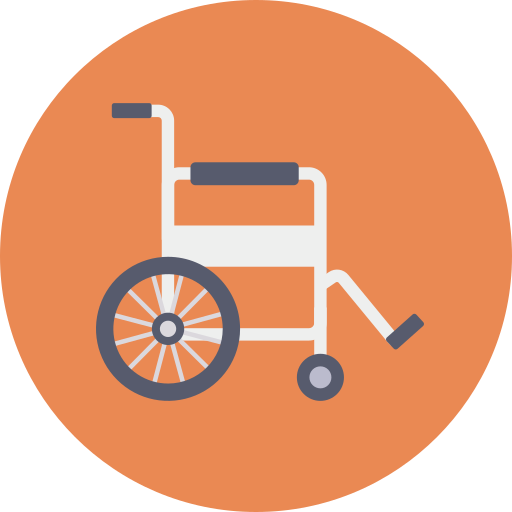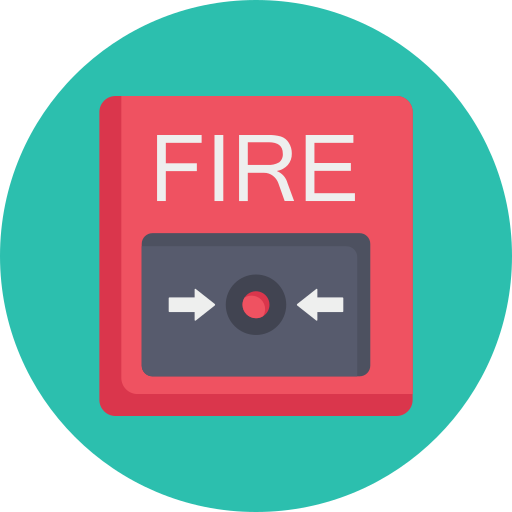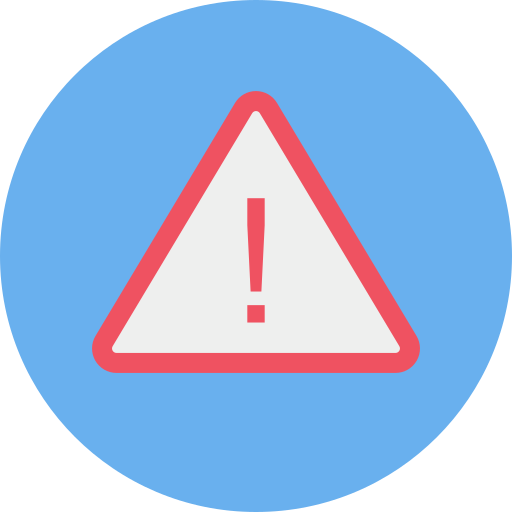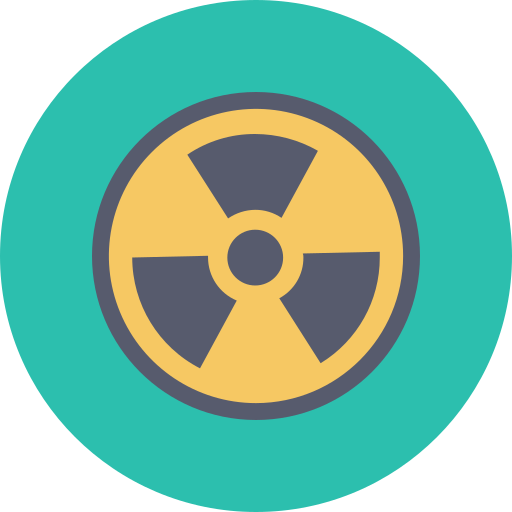Disaster Planning
when you’re disabled
Making a Plan When Disabled
Simple steps and tips to help ensure you’re prepared when disaster strikes.
Planning for Household Emergencies
Tips for Power Outages, Water Shortages, Freezing and Bursting Pipes, and Fires.
Natural Disaster Planning
Tips for Tornado, flood, blizzards, heat waves, earthquakes, and seiches.
Man-Made Disasters
Tips for acts of terrorism, cyberattacks, explosions, and nuclear events.
Are You Prepared for a Disaster?
You have a disability, one that restricts your mobility. There are many things that you can do, but a lot of these things take time. Time you may or may not have in the event of an emergency. Say you use a wheelchair, and you are visually impaired, and there’s an emergency that requires evacuation, and quickly. What do you do? The question is, what should you have done to prepare for this moment?
Hi I’m Vanessa Harris, a licensed engineer who has been confronted with many emergencies in my lifetime, most I was not prepared for. I’ve put my life in danger several times and lost property because I wasn’t prepared and I SHOULD HAVE KNOWN BETTER! But this time I am planning in advance, and I want to share with you what I’ve learned so YOU won’t be caught unawares like I was. Here are a bunch of tips I’ve found from FEMA, CDC, and other experts.
Setting aside time to do emergency planning now will avoid a life-threatening situation in the event of an emergency especially if you’re disabled. When and if an emergency occurs, your planning may save your life, your loved ones, and your pets’ lives! You need to plan ahead because if you have a disability, you don’t want to be improvising during an emergency. If you want to continue to have fun with your loved ones, Plan NOW, you may NEVER GET ANOTHER CHANCE. This is Vanessa Harris with fun4thedisabled.com signing off!
STAY SAFE AND LOOK OUT FOR YOUR NEIGHBOR!
Vanessa
Make A Plan
How might a disaster affect you? Could you make it on your own for at least three days? After a disaster you may not have access to a medical facility or even a drugstore. It’s crucial to plan for your regular needs and know what you would do if they become limited or unavailable. Additional planning steps should include:
- Create a support network. Keep a contact list in a watertight container in your emergency kit.
- Be ready to explain to first responders that you need to evacuate and choose to go to a shelter with your family, service animal, caregiver, personal assistant and your assistive technology devices and supplies.
- Plan ahead for accessible transportation that you may need for evacuation or getting to a medical clinic. Work with local services, public transportation or paratransit to identify your local or private accessible transportation options.
- Inform your support network where you keep your emergency supplies. You may want to consider giving one member a key to your house or apartment.
- Contact your city or county government’s emergency management agency or office. Many local offices keep lists of people with disabilities so they can be helped quickly in a sudden emergency.
- If you are dependent on dialysis or other life-sustaining treatment know the location and availability of more than one facility.
- If you use medical equipment in your home that requires electricity, talk to your doctor or health care provider about how you can prepare for its use during a power outage.
- Wear medical alert tags or bracelets.
- If you have a communication disability make sure your emergency information says the best way to communicate with you.
- If you use an augmentative communications device or other assistive technologies, plan how you will evacuate with the devices or how you will replace equipment if lost or destroyed. Keep model numbers and note where the equipment came from (Medicaid, Medicare, private insurance, etc.).
- Plan how you will communicate with others if your equipment is not working, including laminated cards with phrases, pictures or pictograms.
- Keep Braille/text communication cards, if used, for two-way communication.
- The U.S. Department of Health and Human Services’ online tool helps people locate and access their electronic health records from a variety of sources.
- Plan for children with disabilities and people who may have difficulty in unfamiliar or chaotic environments.


Get Benefits Electronically
A disaster can disrupt mail service for days or weeks. If you depend on Social Security or other regular benefits, switching to electronic payments is a simple, significant way to protect yourself financially before disaster strikes. It also eliminates the risk of stolen checks. The U.S. Department of the Treasury recommends two safer ways to get federal benefits:
- Direct deposit to a checking or savings account. If you get federal benefits you can sign up by calling 800-333-1795 or sign up online.
- The Direct Express® prepaid debit card is designed as a safe and easy alternative to paper checks. Call toll-free at 877-212-9991 or sign up online.
Tips for People Who are Deaf or Hard of Hearing
- A weather radio (with text display and a flashing alert)
- Extra hearing-aid batteries
- Pen and paper (in case you have to communicate with someone who does not know sign language)
Tips for People Who are Blind or Have Low Vision
- Mark emergency supplies with Braille labels or large print. Keep a list of your emergency supplies and where you bought them on a portable flash drive or make an audio file that is kept in a safe place where you can access it.
- Keep communication devices for your particular needs, such as a Braille or deaf-blind communications device as part of your emergency supply kit.
Tips for People with Speech Disability
- If you use an augmentative communications device or other assistive technologies plan how you will evacuate with the devices or how you will replace equipment if it is lost or destroyed. Keep model information and note where the equipment came from (Medicaid, Medicare, private insurance, etc.).
- Plan how you will communicate with others if your equipment is not working, including laminated cards with phrases and/or pictogram.
Tips for People with a Mobility Disability
- If you use a power wheelchair have a lightweight manual chair available as a backup if possible. Know the size and weight of your wheelchair in addition to whether or not it is collapsible, in case it has to be transported.
- Show others how to operate your wheelchair.
- Purchase an extra battery for a power wheelchair or other battery-operated medical or assistive technology devices. If you can’t purchase an extra battery, find out what agencies, organizations or local charitable groups can help you buy one. Keep extra batteries on a trickle charger at all times.
- Consider keeping a patch kit or can of sealant for flat tires and/or extra inner tube if wheelchair or scooter is not puncture proof.
- Keep an extra mobility device such as a cane or walker if you use one.
- Keep a portable air pump for wheelchair tires.
- If you use a seat cushion to protect your skin or maintain your balance and you must evacuate, have an extra cushion to take with you.
Tips for Individuals with Sensory Disabilities (including autism spectrum disorder)
For people with sensory disabilities, this may include:
- Handheld electronic devices (loaded with movies and games)
- Spare chargers
- Sheets and twine or a small pop up tent (to decrease visual stimulation in a busy room or to provide instant privacy)
- Headphones (to decrease auditory distractions)
- Comfort snacks
Additional Items to Keep in Your Emergency Kit
- At least a week-long supply of prescription medicines
- A list of all medications, dosage and any allergies
- Extra eyeglasses
- Extra hearing aid batteries
- Extra wheelchair batteries (or a manual wheelchair if possible)
- Oxygen
- A list of the style and serial number of medical devices (include special instructions for operating your equipment if needed)
- Copies of medical insurance and Medicare cards
- Contact information for doctors, relatives or friends who should be notified if you are hurt
- Pet food, extra water, collar with ID tag, medical records and other supplies for your service animal Here is some information about COVID and pets
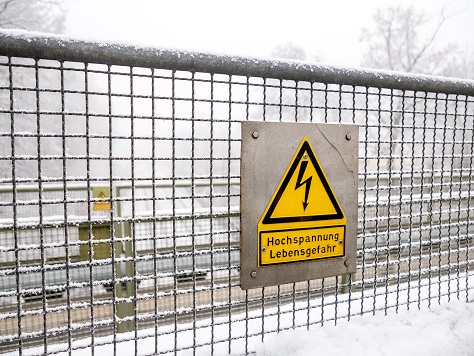
Emergency Preparedness for Power Outages, Water Shortages, Freezing and Bursting Pipes and Fires

Home Preparation and Evacuation
- Listen to weather forecasts and plan ahead.
- If you lose power, use flashlights. Do not use candles or kerosene lamps; they can create a safety hazard.
- Develop a family emergency plan that includes alternative arrangements should you need to leave your home. Make provisions for special needs family members such as the elderly, disabled, medically affected, or infants. If you are dependent on electric-powered medical equipment, seek alternate arrangements in the event of an outage.
- Have the following items on ready:
- Flashlights, not candles
- Fresh batteries
- Battery-operated clock radio
- Fully-charged cell phone
- Non-perishable foods
- Water: one gallon of bottled water per person per day without electric service. If your home is served by well water, fill a bathtub with water for sanitation use.
- Local maps
- Blankets
- Keep a first-aid kit in your home and in your car. Visit the FEMA Emergency Preparedness checklist for recommended items.
- Make a list of emergency phone numbers
- Keep cash on hand.
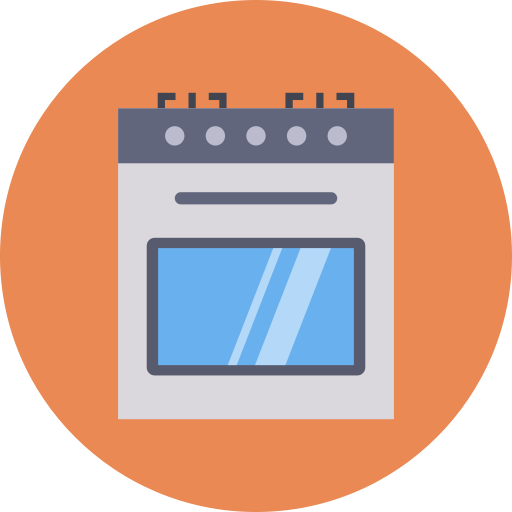
Protect Appliances and Electronic Equipment
Many home electronics can be damaged during a power outage. Here are some ways to protect sensitive equipment:
- Purchase equipment with built-in surge protection or a battery-powered back-up system.
- Plug sensitive equipment into separate, grounded circuits to isolate them from fluctuations caused by major appliance restarts.
- Plug electronic equipment into electrical surge suppressors or arresters on properly grounded circuits.
- Consider having a lightning arrester installed at your main circuit panel.
- During a power outage, turn off all appliances, including your furnace, air conditioner, and water heater to avoid overloading circuits. Leave one lamp on so you will know when your service is restored.
- If you own a business or have a home office, consider installing an uninterruptible power supply for temporary backup power for your electronic equipment.
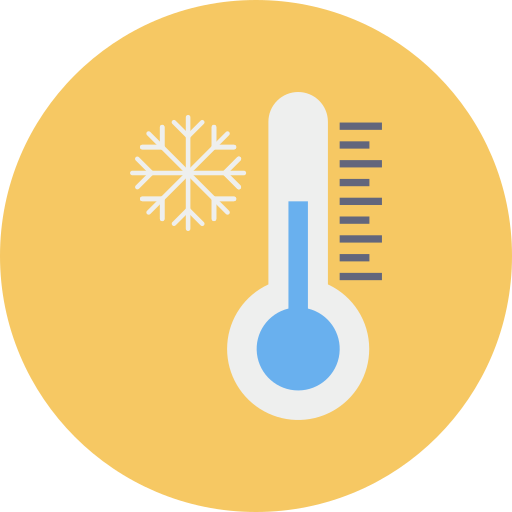
What To Do If Your Pipes Freeze
When the weather turns extremely cold, water supply pipes are prone to freezing and bursting. Plumbers often tell you how to prevent pipes from freezing, but they don’t always tell you what to do if your pipes have already frozen. Here are some steps you can take to remedy frozen pipes safely. If you follow these tips you may be able to avoid or minimize serious damage
- Shut-off the water main leading into the structure and open (not wide open, just open) any faucets connected to the pipe. This will reduce pressure on the frozen pipes and minimize flooding if the pipes burst. This is particularly important if you are going to be away from home.
- If the frozen pipe is exposed and visible, use a hair dryer or space heater to thaw the ice blockage. Do not use an open flame and keep space heaters far enough away from walls and flammable materials to avoid fire risk!
- Examine exposed pipes for leaks. Even with the water main turned off, there will be enough pressure to reveal leaks once the pipe has thawed.
- Contact a licensed plumber equipped with pipe-thawing equipment to get your pipes flowing again and if necessary, make repairs to damaged pipes.
- Even if no leaks are found, a plumber should examine pipes that experienced a hard freeze. Some pipes may need to be replaced since the material has experienced stretching and fatigue, putting the pipes at risk for future failure.
Keep in mind when the pipes thaw, they may begin spewing water inside walls if the pipe has burst. The resulting flooding can quickly cause serious property damage. Contact your plumber if you are dealing with all problems associated with frozen pipes.
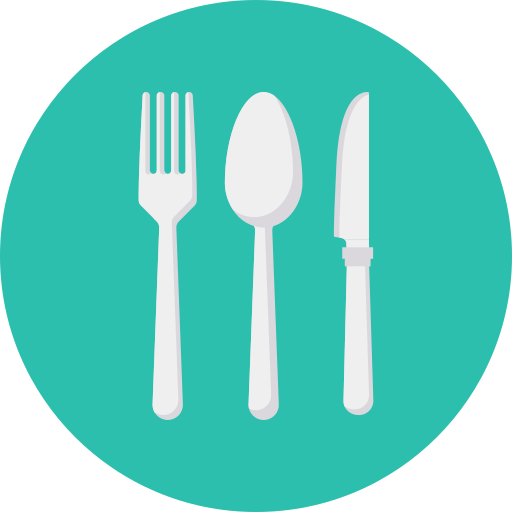
Protect Your Food
To protect your food, keep refrigerator and freezer doors closed as much as possible. Food can stay frozen for 48 hours or more in a freezer if you keep the door closed. Consider freezing containers of water ahead of time and keeping them in the freezer to help your food stay frozen longer. For more information on keeping food safe during a power outage, check out USDA Food Safety: Keeping Food Safe in an Emergency.
Impacts of Power Outages
Extended power outages may impact the whole community and the economy. A power outage is when the electrical power goes out unexpectedly. A power outage may:
- Disrupt communications, water and transportation.
- Close retail businesses, grocery stores, gas stations, ATMs, banks and other services.
- Cause food spoilage and water contamination.
- Prevent use of medical devices.
Mitigation Measures for a Power Outage
- Keep freezers and refrigerators closed.
- Use a generator, but ONLY outdoors and away from windows.
- Do not use a gas stove and ovens to heat your home.
- Disconnect appliances and electronics to avoid damage from electrical surges.
- Have alternate plans for refrigerating medicines or using power-dependent medical devices.
- If safe, go to an alternate location for heat.
- Check with your local officials for locations of warming centers. Locations may have changed this year due to the COVID-19 pandemic.
- CDC has provided guidance on public shelters during the COVID-19 pandemic. to help protect people from COVID-19. This guidance can be used for warming shelters, too.
- If you go to a public warming center, keep at least six feet of space between you and individuals who are not a part of your immediate household.
- Wear masks when in public spaces. Masks should not be worn by children under 2 years old, people who have trouble breathing, and people who are unconscious, incapacitated, or otherwise unable to remove them.
- Try to bring items that can help protect you and others in the warming center from COVID-19, such as two masks for each person age two or older in the household, hand sanitizer that contains at least 60 percent alcohol, and cleaning materials.
- Review the CDC’s guidelines for “Going to a Public Disaster Shelter During the COVID-19 Pandemic.”
- Be a good neighbor. Check on the welfare of others.
- Follow the latest guidelines from the CDC and your local authorities to prevent the spread of COVID-19.


How to Stay Safe When a Power Outage Threatens
- Take an inventory of the items you need that rely on electricity.
- Talk to your medical provider about a power outage plan for medical devices powered by electricity and refrigerated medicines. Find out how long medication can be stored at higher temperatures and get specific guidance for any medications that are critical for life.
- Plan for batteries and other alternatives to meet your needs when the power goes out.
- Install carbon monoxide detectors with battery backup in central locations on every level of your home.
- Determine whether your home phone will work in a power outage and how long battery backup will last.
- Review the supplies that are available in case of a power outage. Have flashlights with extra batteries for every household member. Have enough nonperishable food and water. Be sure to include hand sanitizer that contains at least 60 percent alcohol to use in case you are unable to wash your hands with soap and water.
- Include non-perishable foods, cleaning supplies, and water for several days, in case services are cut off in your area. If you are able to, set aside items like soap, hand sanitizer that contains at least 60 percent alcohol, disinfecting wipes, and general household cleaning supplies that you can use to disinfect surfaces you touch regularly. After a power outage, you may not have access to these supplies for days or even weeks.
- Being prepared allows you to avoid unnecessary excursions and to address minor medical issues at home, alleviating the burden on urgent care centers and hospitals.
- Remember that not everyone can afford to respond by stocking up on necessities. For those who can afford it, making essential purchases and slowly building up supplies in advance will allow for longer time periods between shopping trips. This helps to protect those who are unable to procure essentials in advance of the pandemic and must shop more frequently. In addition, consider avoiding WIC-labeled products so that those who rely on these products can access them.
- Use a thermometer in the refrigerator and freezer so that you can know the temperature when the power is restored. Throw out food if the temperature is 40 degrees or higher.
- Keep mobile phones and other electric equipment charged and car and generator gas tanks full.3
Survive DURING
- Keep freezers and refrigerators closed. The refrigerator will keep food cold for about four hours. A full freezer will keep the temperature for about 48 hours. Use coolers with ice if necessary. Monitor temperatures with a thermometer.
- Maintain food supplies that do not require refrigeration.
- Avoid carbon monoxide poisoning. Generators, camp stoves or charcoal grills should always be used outdoors and at least 20 feet away from windows. Never use a gas stovetop or oven to heat your home.
- Check on your neighbors. Older adults and young children are especially vulnerable to extreme temperatures.
- Go to a community location with power if heat or cold is extreme.
- Turn off or disconnect appliances, equipment or electronics. Power may return with momentary surges or spikes that can cause damage.
Be Safe AFTER
- When in doubt, throw it out! Throw away any food that has been exposed to temperatures 40 degrees or higher for two hours or more, or that has an unusual odor, color or texture.
- If the power is out for more than a day, discard any medication that should be refrigerated, unless the drug’s label says otherwise. Consult your doctor or pharmacist immediately for a new supply.
- Continue taking steps to protect yourself from COVID-19 and other infectious diseases, such as washing your hands often and cleaning commonly touched surfaces.
- Engage virtually with your community through video and phone calls. Know that it’s normal to feel anxious or stressed. Take care of your body and talk to someone if you are feeling upset. The threat of a power outage can add additional stress. Follow CDC guidance for managing stress during a traumatic event.
Learn About Fires
- Fire is FAST! In less than 30 seconds a small flame can turn into a major fire. It only takes minutes for thick black smoke to fill a house or for it to be engulfed in flames.
- Fire is HOT! Heat is more threatening than flames. Room temperatures in a fire can be 100 degrees at floor level and rise to 600 degrees at eye level. Inhaling this super-hot air will scorch your lungs and melt clothes to your skin.
- Fire is DARK! Fire starts bright, but quickly produces black smoke and complete darkness.
- Fire is DEADLY! Smoke and toxic gases kill more people than flames do. Fire produces poisonous gases that make you disoriented and drowsy. Asphyxiation is the leading cause of fire deaths, exceeding burns by a 3-to-1 ratio.
Create and practice a fire escape plan
Keep a working smoke alarm
Fire Escape Planning for Older Adults and People with Access or Functional Needs
- If you use a walker or wheelchair, check all exits to be sure you get through the doorways.
- Make any necessary accommodations – such as providing exit ramps and widening doorways – to facilitate an emergency escape.
- Speak to your family members, building manager or neighbors about your fire safety plan and practice it with them.
- Contact your local fire department’s non-emergency line and explain your special needs. Ask emergency providers to keep your special needs information on file.
- Keep a phone near your bed and be ready to call 911 if a fire occurs.
The following link helps you to plan to prevent fires, how to prepare for a fire, what to do after a fire, and teaching children that fire is a tool, not a toy.

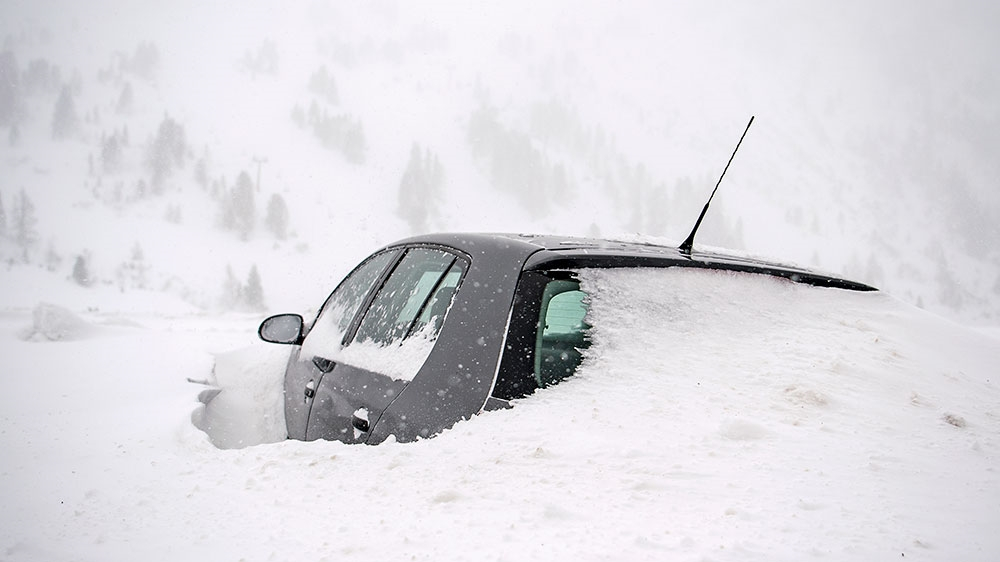
Planning For A Natural Disaster
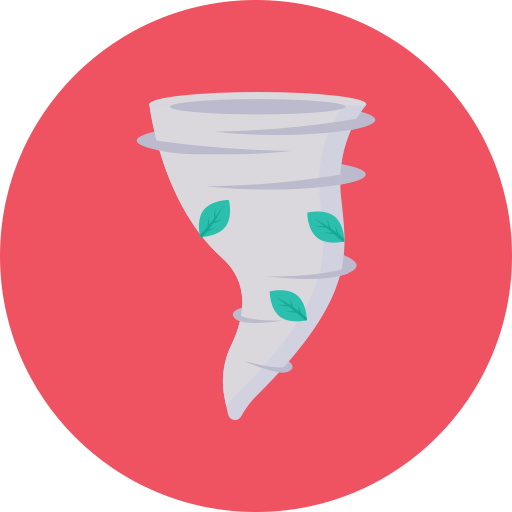
Tornados
Tornadoes are violently rotating columns of air that extend from a thunderstorm to the ground. Tornadoes can destroy buildings, flip cars, and create deadly flying debris.
The following link tells you exactly what to do to prepare for a tornado.

Flooding
Flooding is a temporary overflow of water onto land that is usually dry. Floods are the most common natural disaster in the United States. Failing to evacuate flooded areas or entering floodwaters can lead to injury or death.
Here’s the link that helps you plan for a flood:
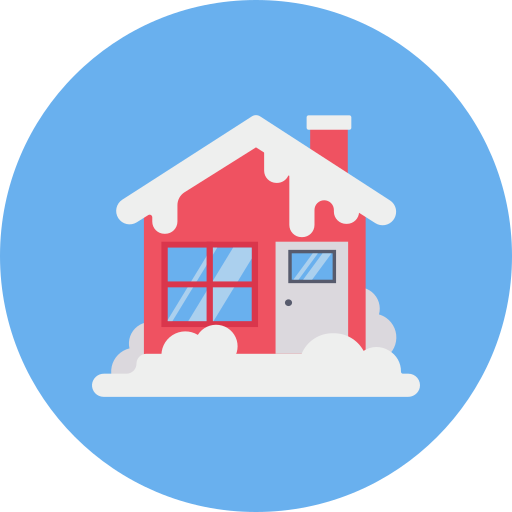
Winter Storms
Winter storms create a higher risk of car accidents, hypothermia, frostbite, carbon monoxide poisoning, and heart attacks from overexertion. Winter storms, including blizzards, can bring extreme cold, freezing rain, snow, ice, and high winds.
Here’s the link to prepare for a winter storm or blizzard.

Extreme Heat
Extreme heat is a high heat and humidity period with temperatures above 90 degrees for at least two to three days. In extreme heat, your body works extra hard to maintain an average temperature, leading to death. Extreme heat is responsible for the highest number of annual deaths among all weather-related hazards.
To prepare for periods of extreme heat, use this link:
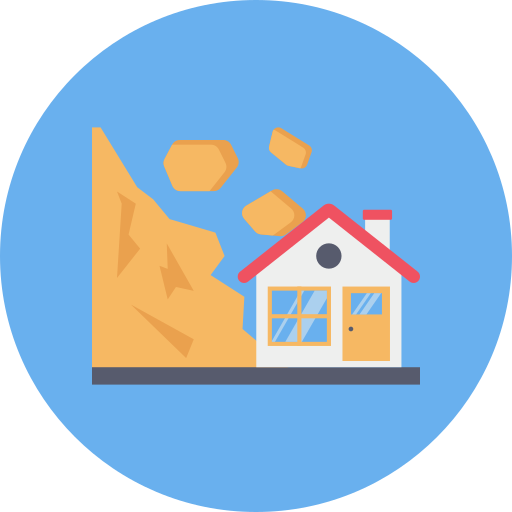
Earthquake
An earthquake is a sudden, rapid shaking of the ground caused by the shifting of rocks deep underneath the earth’s surface. Earthquakes can cause fires, tsunamis, landslides, or avalanches. While they can happen anywhere without warning, areas at higher risk for earthquakes include Alaska, California, Hawaii, Oregon, Puerto Rico, Washington, and the entire Mississippi River Valley.
We’ve had earthquakes in Illinois. To prepare for an earthquake, go to this link:
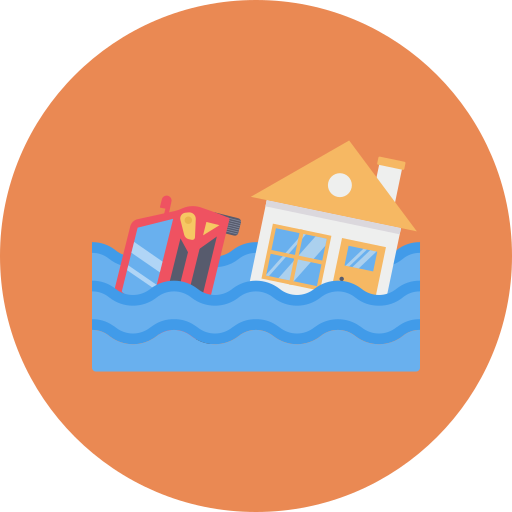
Seiche / Lake Tsunami
A seiche or lake tsunami can kill or injure people and damage or destroy buildings and infrastructure as waves come in and go out. A lake tsunami is a series of enormous waves caused by earthquakes, underwater landslides or tornados.
To prepare for a seiche, use the following link:
Man-made Disasters
Acts of Terrorism
Attacks in crowded and public spaces include persons with firearms, using a vehicle to cause mass casualties, using bombs to cause mass casualties and other methods. These are addressed here: https://www.ready.gov/public-spaces
Bioterrorism is when Biological agents (organisms or toxins that can kill or disable people, livestock and crops) are deliberately released. To protect yourself, check this link: https://www.ready.gov/Bioterrorism
Cyberattacks
Cybersecurity involves preventing, detecting and responding to cyberattacks that can have wide-ranging effects on individuals, organizations, the community and at the national level.
Cyberattacks are malicious attempts to access or damage a computer or network system. Cyberattacks can lead to loss of money, theft of personal, financial and medical information that can damage your reputation and safety. To learn how to protect yourself from cyberattacks, refer to this link: https://www.ready.gov/cybersecurity
Explosions
Explosive devices can be carried by cars and people and are easily detonated from remote locations or by suicide bombers. There are steps you can take to prepare. To learn what to do before an explosion, including bomb threats, suspicious packages, and letters, during and after an explosion, please see this link: https://www.ready.gov/explosions
Hazardous Materials Incidents
Hazardous materials can include explosives, flammable and combustible substances, poisons, and radioactive materials. Emergencies can happen during production, storage, transportation, use, or disposal. You are at risk when chemicals are used unsafely or released in harmful amounts where you live, work or play.To find out if your community has a local emergency planning committee, or how to plan and respond to a hazardous incident, see this link: https://www.ready.gov/hazardous-materials-incidents
Nuclear Power Plants
Nuclear power plants use the heat generated from nuclear fission in a contained environment to convert water to steam, which powers generators to produce electricity. Although the construction and operation of these facilities are closely monitored and regulated by the Nuclear Regulatory Commission (NRC), accidents are possible. An accident could result in dangerous levels of radiation that could affect the health and safety of the public living near the nuclear power plant.
Nuclear power plants operate in most states in the country and produce about 20 percent of the nation’s power. Nearly 3 million Americans live within 10 miles of an operating nuclear power plant.
To plan and understand what to do before, during, and after a nuclear power plant emergency, see this link: https://www.ready.gov/nuclear-power-plants

Thank You!
We’ve covered the disasters that are most likely. If you don’t plan for these, there is a high likelihood that you will be affected.
The links above work and the federal government has updated all of them since February 2021.
Know what disasters and hazards could affect your area, how to get emergency alerts, and where you would go if you and your family need to evacuate. Make sure your family has a plan and practices it often.
To get more information about putting a plan that is right for you and your family, go here: https://www.ready.gov/be-informed
On the top of that page is a link to 30 Disasters and Emergencies–including terrorism, fires, household chemical emergencies, thunderstorms and lightning, and RECOVERING FROM DISASTER.
Hear From Us
Never miss our new content! Click the button below to sign up for our bi-weekly newsletter. You will receive each of our new projects straight to your mailbox!
Location
Chicago, IL 60615
Contact
(312) 725-9268
fun@fun4thedisabled.com
Hours
Mon – Fri : 9am–5pm
Sat & Sun : Closed

